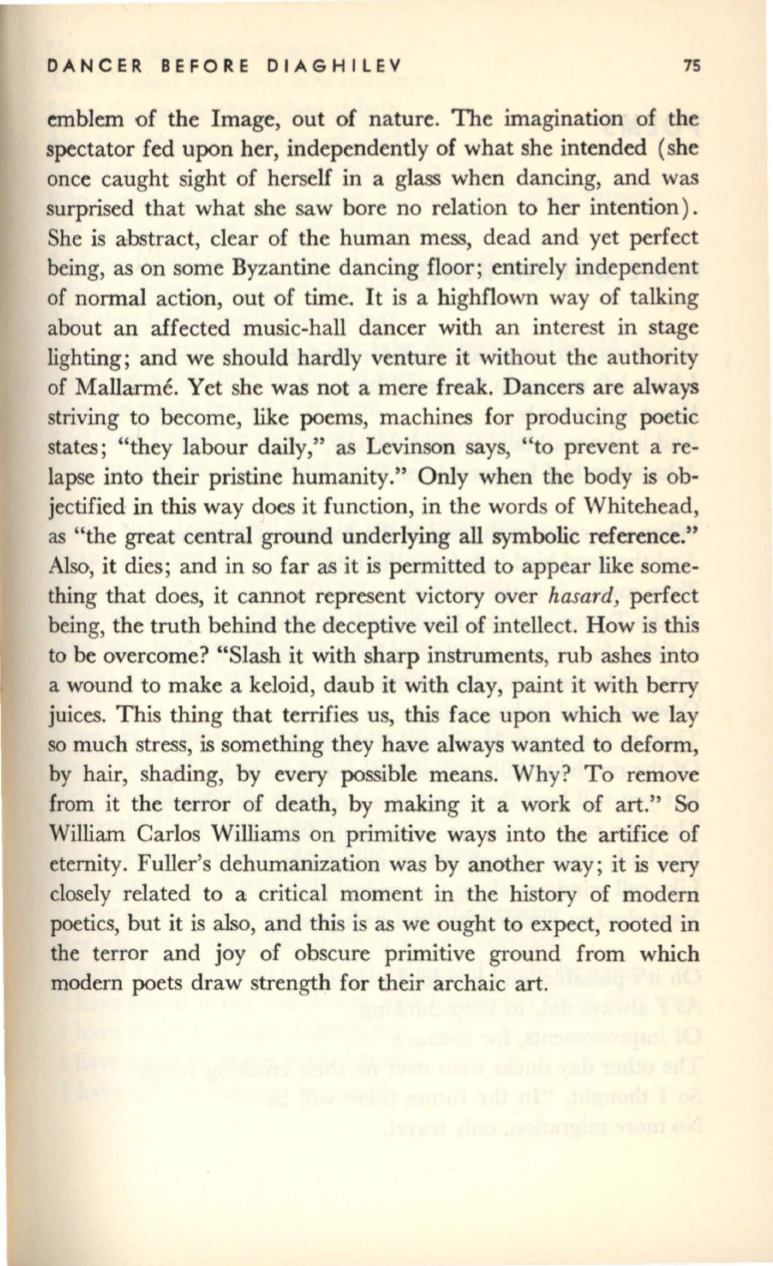
DANCER BEFORE DIAGHllEV
7S
emblem of the Image, out of nature. The imagination of the
spectator fed upon her, independently of what she intended (she
once caught sight of herself in a glass when dancing, and was
surprised that what she saw bore no relation to her intention).
She is abstract, clear of the human mess, dead and yet perfect
being, as on some Byzantine dancing floor; entirely independent
of normal action, out of time. It is a highflown way of talking
about an affected music-hall dancer with an interest in stage
lighting; and we should hardly venture it without the authority
of
Mallarme.
Yet she was not a mere freak. Dancers are always
striving to become, like poems, machines for producing poetic
states; "they labour daily," as Levinson says, "to prevent a re–
lapse into their pristine humanity." Only when the body is ob–
jectified in this way does it function, in the words of Whitehead,
as "the great central ground underlying
all
symbolic reference."
Also, it dies; and in so far as it is permitted to appear like some–
thing that does, it cannot represent victory over
hasard
J
perfect
being, the truth behind the deceptive veil of intellect. How is this
to be overcome? "Slash it with sharp instruments, rub ashes into
a wound to make a keloid, daub it with clay, paint it with berry
juices. This thing that terrifies us, this face upon which we lay
so much stress, is something they have always wanted to deform,
by hair, shading, by every possible means. Why? To remove
from it the terror of death, by making it a work of art." So
William Carlos Williams on primitive ways into the artifice of
eternity. Fuller's dehumanization was by another way; it is very
closely related to a critical moment in the history of modem
poetics, but it is also, and this is as we ought to expect, rooted in
the terror and joy of obscure primitive ground from which
modem poets draw strength for their archaic art.


